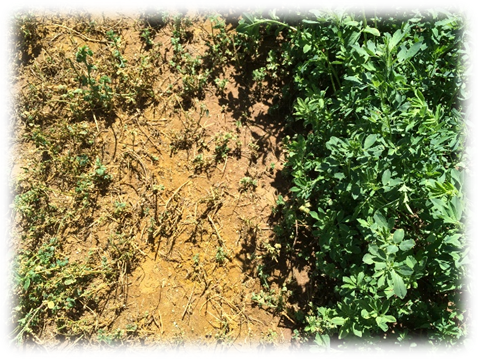
|
|
|
|

|
|||
|
|
|||
|
|
|||
|
Salt cedars have shown up in fields this year that have never had them before. There
are several species of salt cedar that are often lumped together. They are all in
that Tamarix genus and have hybridized so it is difficult to distinguish one from
another. Most fall within the scientific name Tamarix chinensis.
They were brought to the US from Asia and Europe in the early 1800s for erosion control, shade and as ornamentals. They were released by the National Arboretum 
Salt Cedars are trees and grow prolifically. In addition to crop competition, they secrete salt which damages surrounding plants. They are difficult to control. Once they are well-established, cultivation seems to spread rather than kill them. Most herbicides, including Glyphosate , do not control salt cedar. Currently the most effective herbicides on this weed are Triclopyr and Imazapyr. Neither, however, can be used in cropland but are used on salt cedars in non-crop areas, industrial sites and ditchbanks. Triclopyr can be used in grass pastures and rangelands. Imazapyr is a non-crop herbicide. Digging them out or spot spraying with Triclopyr can be effective. 
Want to know what this is? I asked Barry on 5/10/14:
Answer Here
To contact Barry Tickes go to: btickes@ag.arizona.edu.
|
|||
| Back | |||
|
For questions or comments on any of the topics please contact Marco Pena at the Yuma Agricultural Center.
|
|||
|
Home |
Cotton | Veggies |
Forages | Grains
| Citrus |
Crop x Crop Insects | Diseases| Weeds | Pesticides | Economics | News | Weather | Research | Photos | Contacts | General Info. Copyright © 2001 University of Arizona, College of Agriculture and Life Sciences Webmaster: Al Fournier (acis@ag.arizona.edu) |
|||
